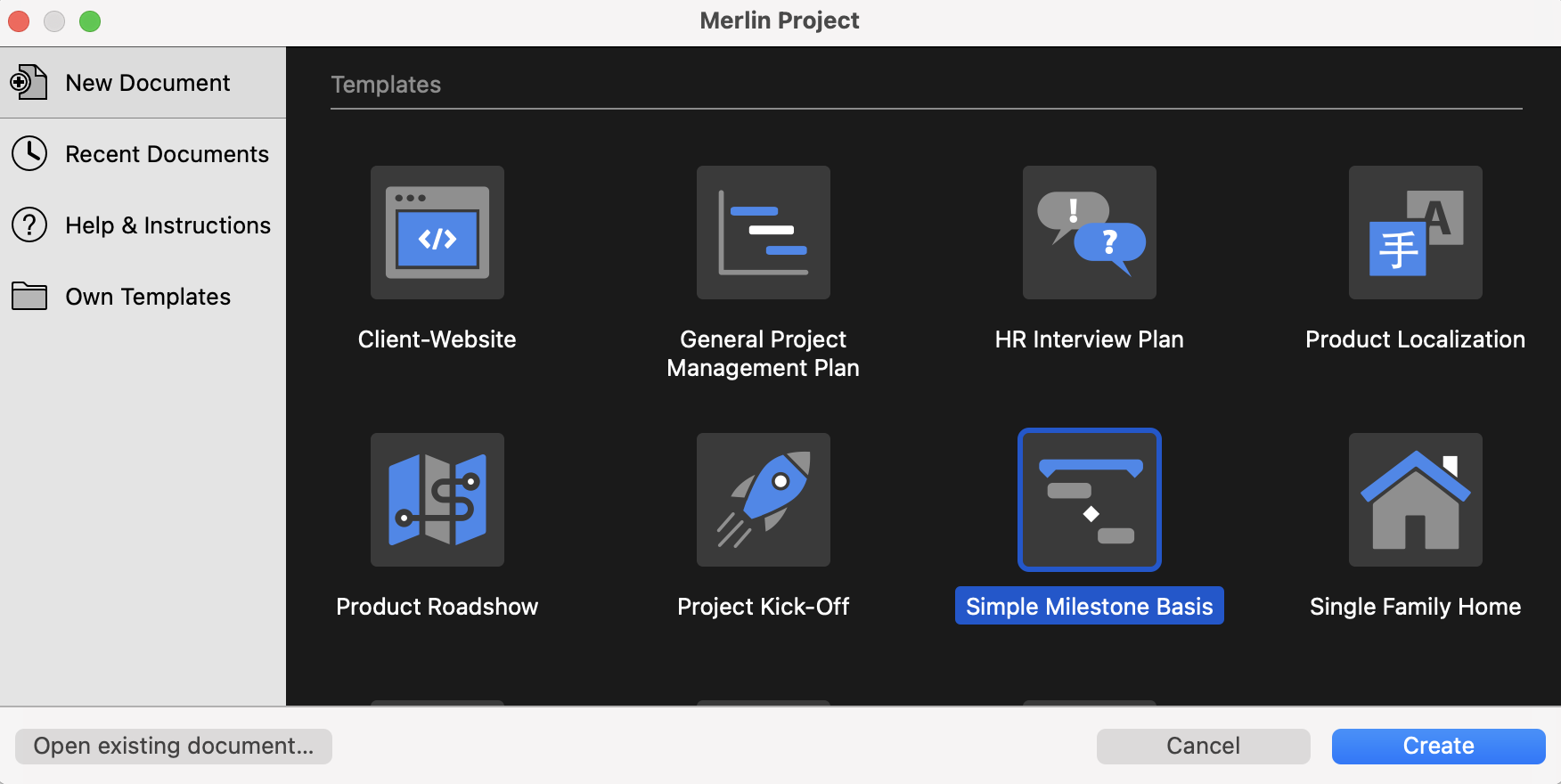Milestones

Milestones represent important control and decision points in a project in project management. They define and delimit project phases from each other. The correct use of milestones supports the success of your project!
What Are Milestones
Just like in real life, you start at a point and try to orient yourself along the way based on the milestones. On the one hand, this helps to stay within the time frame and also not to lose sight of the set goal. For example, the setting of the foundations is a prerequisite for the basement walls and the completion of the basement ceiling is a milestone for the start of the building construction. Such points or intermediate goals in the course of the project are called milestones. They are also referred to as checkpoints or measuring points.
In general, milestones can be events at which a project phase is started or completed, or at which a decision is to be made on the further course of action in the project section. They can additionally exist within phases.
Milestones never run over a period of time. They are merely decision points and mark a point in the project.
Why Are Milestones Important?
Milestones in a project clearly show the path to project completion. They are specially marked in network plans and Gantt charts. Only if they are reached, the project can be completed successfully.
The division of a project plan into individual intervals or milestones has a great benefit for the success of your project, but also the monitoring of the project progress.
Milestones Are Markers
The main reason for unsuccessful projects is that goals are missed or that they have not been clearly defined. Milestones are the signposts to the goal and thus to the successful completion of the individual phases and ultimately of the entire project.
Milestones reduce the risk of undesirable developments, because they support the monitoring of the project progress by means of project controlling. When a milestone is reached, a decision is made as to whether and how the project should be continued. Particularly at the end of project phases, such decisions are made.
Phases in Merlin Project are covered as a dedicated topic in a separate blog post. So you can successfully plan all your projects with the use of milestones and phases!
Milestones Have a Quality-assuring Effect
Actually, all phases and activities of a project could simply be processed one after the other. However, in practice it has been found that it makes much more sense to make sure that the results achieved also correspond to the specifications in the project and that the objectives have been met and completed according to these specifications.
Milestones enable continuous involvement of the client and, if necessary, the project steering committee through decisions on project completion and phase release.
Milestones Motivate
The impact of milestones should not be underestimated. It is part of our nature to work through things and to put a check mark on work done. Who is not happy when an intermediate result has been achieved by the planned deadline? Moreover, deadlines are more likely to be met if they are clearly defined.
Milestones enable continuous goal orientation of employees, create a sense of achievement and synchronize cooperation. Thus, milestones are also a means of leadership and motivation.
Milestones Are Used For Project Control
Are you on time and on budget? With a large number of phases and work packages, it is difficult to maintain an overall view.

Switch on the "Structure plan > Milestones" view in Merlin Project to get an overview of the milestones in the entire project. Will the upcoming milestones be reached? If not, what is the impact on the following project phases? This way you are prepared for all eventualities.
Using Milestones In Merlin Project
Start your project with the integrated "Simple Milestone Basis" template

Build your project using the schema in the template by defining milestones at the start, at the completion of a phase, and at the end of the project. Use as many phases as your project needs. Each phase can include additional tasks and/or phases.

Conclusion
Milestones are small landmarks with a big impact.
Milestones are important waypoints in the project at which certain results are to be achieved. These important checkpoints are often located at the end of project phases, ensuring that one phase can be completed and the next can be started. For practical work, clean wording is important: use defined states as a guide and avoid vague statements or descriptions of tasks.
It is not worth doing without these important helpers in project management.

